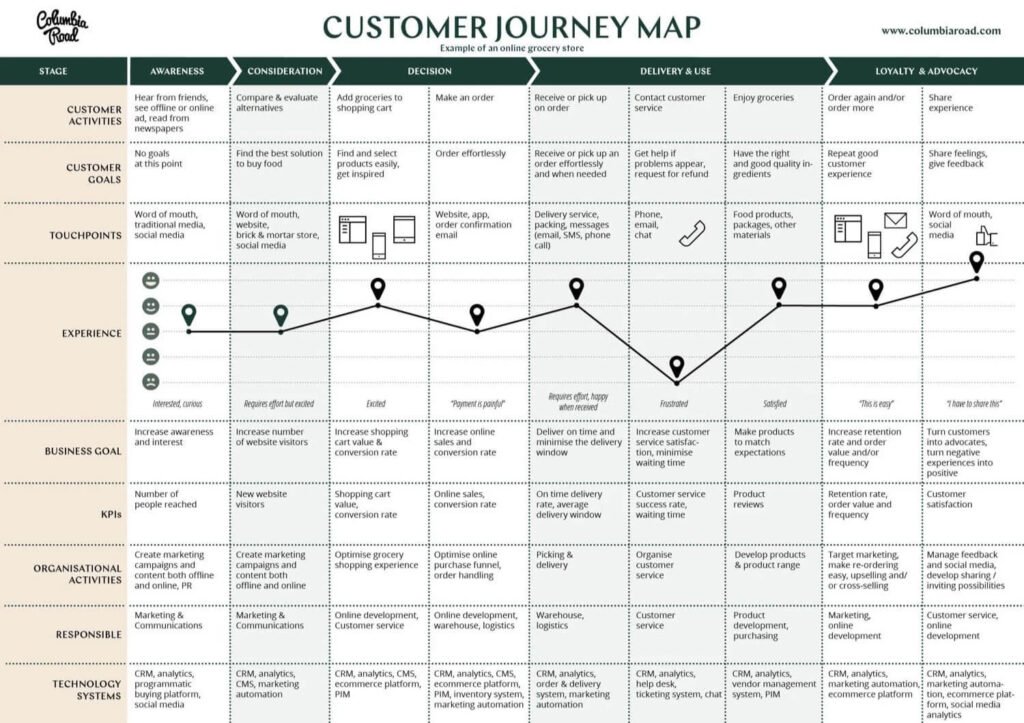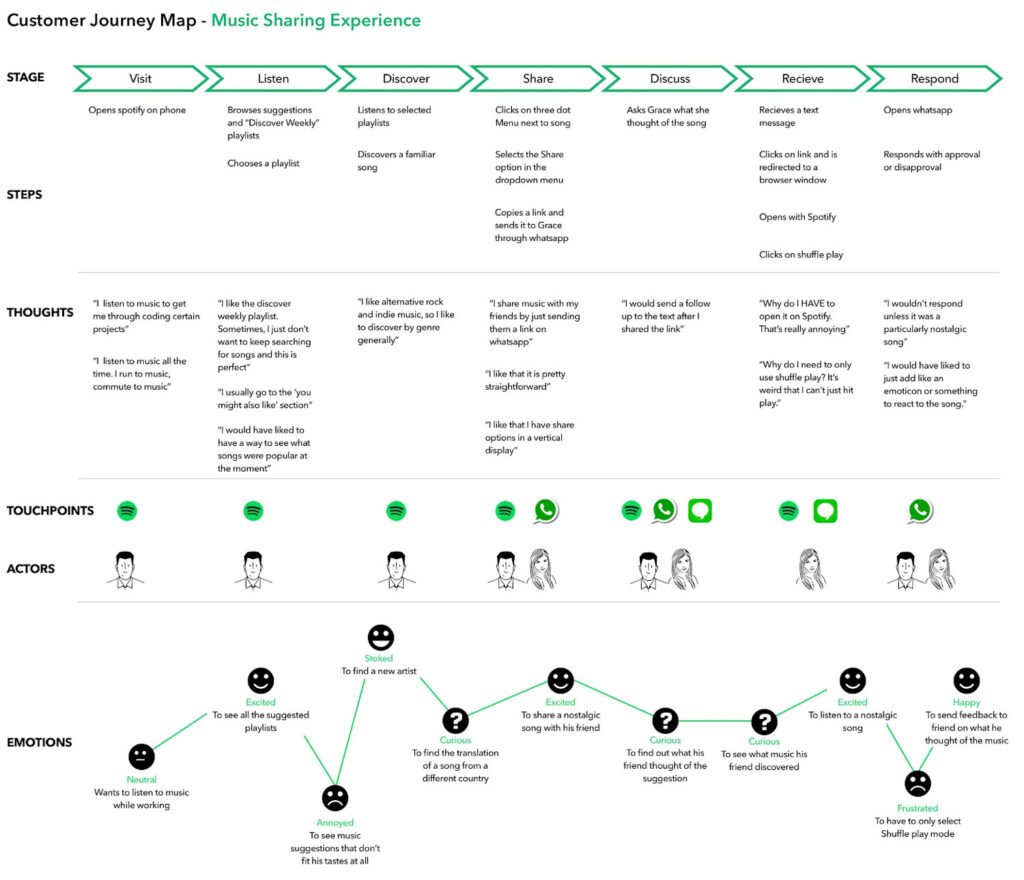User Journey Maps
User Journey Mapping is an essential tool for any software product team. It involves creating a map of the user’s journey through your product, starting from the moment they first become aware of it and continuing through purchase, use and beyond. The map is made up of steps the user takes, decisions they make, and the actions they take in response to the product. By understanding the user’s journey, you can better understand how to create features and experiences that meet user needs.
Implementation
Creating a User Journey Map involves asking a series of questions about the user’s journey, including questions about their goals, what motivates them, what challenges they face, and how they interact with the product.
The answers to these questions can then be used to create a visual map of the user’s journey.
Capturing the above data will allow you to create various types of user maps.
Note: Often, the user map/flow is overlayed with other elements, such as the emotions a user experiences at each stage, user goals, business KPIs, and more.
When to use it
Use user journey maps to:
- Understand the user experience: User Journey Maps help you visualize the steps users go through when interacting with your product or service. This can help identify pain points, opportunities for improvement, and areas where users may get confused or frustrated.
- Improve or design a new product or service: When you’re developing a new product or redesigning an existing one, User Journey Maps can provide valuable insights into the overall user experience. This information can inform your design decisions and ensure you’re creating a user-centered product that meets users’ needs and expectations.
- Identify opportunities for innovation: By mapping out the user journey, you can spot gaps or areas where the experience is lacking, which can be opportunities for innovation. This process can uncover unmet needs or potential new features that could enhance the user experience.
Benefits
Identify gaps
Mapping out the journey will allow you to spot gaps and inconsistencies in user flows.
Identify and prioritize user needs
Visually, the journey will allow you to see pain points and opportunities that help you prioritize features for development.
Shareholder understanding
User journey maps can also be shared with stakeholders, helping them understand and empathize with the user's perspective.




